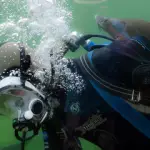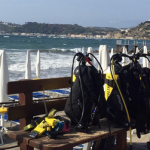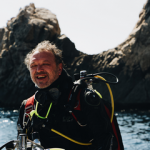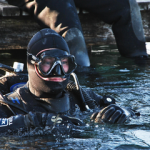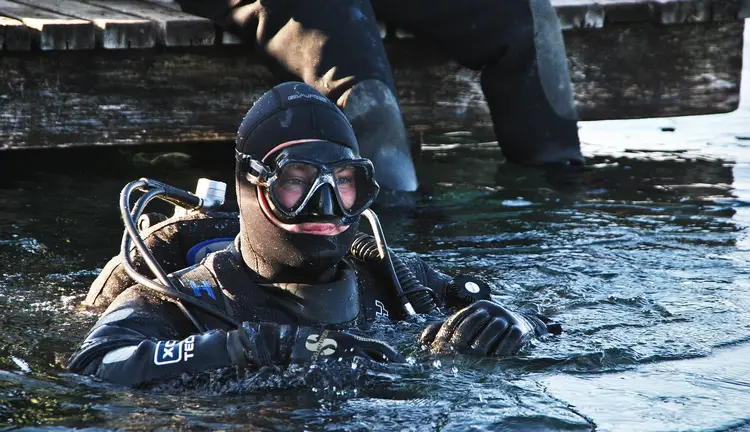
If you are new to drysuit diving, you may be asking if you should use your drysuit or BCD for buoyancy control. There are a number of reasons why this question is an important one, but for me in all the many drysuit dives I’ve done I’ve only ever used by drysuit for buoyancy. These reasons include safety when diving in a drysuit, which is why it’s important to know which to use; your drysuit or BCD for buoyancy control.
It’s best to use your drysuit and not your BCD for buoyancy when diving in a drysuit, as it’s better to use one air-cell for buoyancy. If you use your BCD for buoyancy you’ll need to use both, as you’ll have to add air to your drysuit to avoid drysuit squeeze. This leaves only one to vent on your ascent.
The best way to do more diving is to book yourself on a scuba diving liveaboard. You can check the latest and best deals on liveaboards using the following window:
Dry suit diving buoyancy
Dry suit diving buoyancy is different to diving in a wet suit, as you have another air-cell that gets compressed as you go deeper. The extra air-cell is the airspace inside your drysuit. As you descend on a dive in a drysuit, you need to add air into your drysuit, otherwise it gets very uncomfortable as the suit squeezes you. This is known as drysuit squeeze.
By adding air to your drysuit not only prevents drysuit squeeze, but it also increases your buoyancy too. This leads to the following questions:
- Do you use your BCD for buoyancy when diving in a drysuit?
- Or do you carry on using your drysuit to neutralise your buoyancy, at the same time by adding more air to your drysuit avoids the unconformable squeeze?
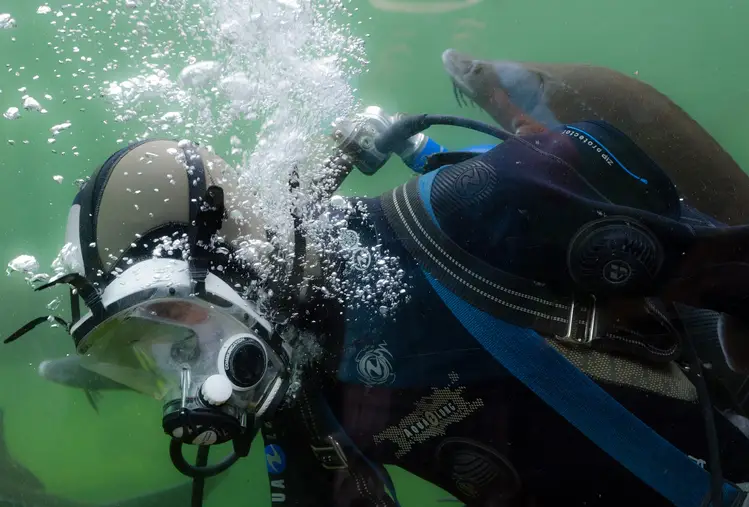
Why use your drysuit for buoyancy control?
There are a number of reasons why I recommend using your drysuit for buoyancy control vs your buoyancy control device (BCD). These include the following reasons:
- Simplicity. I’m all for making this simple and easy. If you only have one air-cell to control, this makes it easy drysuit diving.
- Drysuit squeeze. You need to add air to your drysuit in any event to avoid drysuit squeeze, so why not use it for buoyancy control too.
- Warmth. As you dive deeper, the air in your drysuit gets squeezed. This has a negative impact on how warm your dry suit will keep you in cold water diving. By adding air to your drysuit as you descend will also help you stay warm.
- Safety. If you encounter a problem on your dive, you only have to worry about venting one air cell on your ascent. It’s all too easy to think it will be okay when you encounter a situation, but panic on a dive can cause all manner of problems. A panicked mind can easily forget. If you forget to vent either your drysuit or your BCD this could lead to a more serious problem.
- Less confusion for dive buddies. You should always plan for the worst and hope for the best when scuba diving, like doing buddy checks before each dive. Divers should know whether their buddy is using their drysuit or BCD for buoyancy in case of an emergency. But in case of an emergency, it is far better that only one air-cell is used by your dive buddy if you have to control an ascent for the both of you.
Pro diver tip and a note of caution for the risk of drysuit inversion. Drysuit inversion is when the air in your drysuit migrates to your feet and inverts you head first, feet-up in the water. The problem with this scenario is that when you’re inverted you have no means of venting the air from your drysuit. The only way to correct the problem is to bring your knees up to your chest to force the air back towards the top of your drysuit. By using your drysuit for buoyancy means there’s more air to migrate. But having said that, if you are correctly weighted, i.e. not over-weighted, this should not be too much extra air.
Pro diver tip. Use your BCD on diving entry for buoyancy on the surface. This is because it’s far easier to dump your air from your BCD to descend than it is from your drysuit. But always use own breath to fill your BCD on the dive boat to conserve air in your dive tank for the dive.
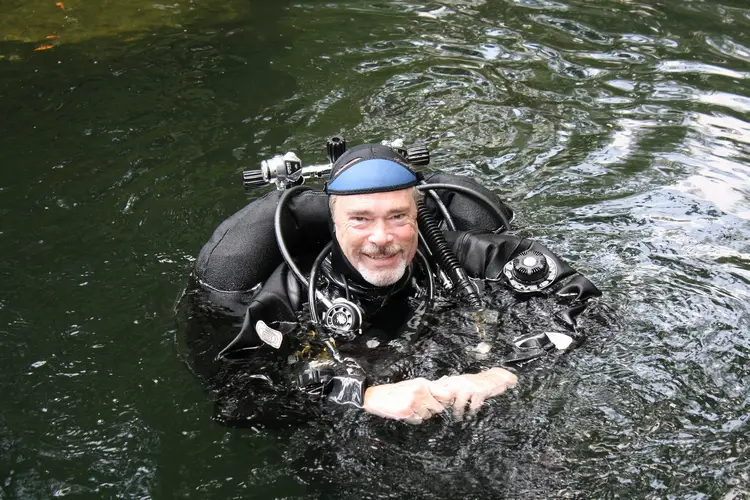
Why use your BCD for buoyancy control when drysuit diving?
Some scuba divers argue that it’s better to use your BCD for buoyancy when diving in a drysuit.
- Diving in a neoprene drysuit. The amount of drysuit squeeze you get in a neoprene drysuit (not a compressed or a crushed neoprene drysuit) is less than in a membrane (shell or trilaminate) drysuit. This is because the neoprene is fitted snugly around your body and compresses evenly vs a membrane suit that has creases and folds that can dig into your skin. This means you don’t need to put as much air in a neoprene drysuit so you might as well use your BCD for buoyancy control.
- Tech diving with heavy equipment. If you are a tech diver with heavy diving equipment, you may need to use your BCD for added buoyancy control and to avoid putting excessive air in your drysuit.
- Valves sticking on drysuit. Drysuit valves can sometimes stick and can make it more difficult to vent air on your ascent from a dive. If you can’t vent the air on your ascent this is likely to lead to a fast ascent and potentially decompression sickness.
- Too much air in drysuit. Some argue that it’s not safe to only use your drysuit as buoyancy as this will mean you have too much air in your drysuit. Too much air in a drysuit carries the risk of inverting and could lead to an uncontrolled fast ascent.
- Air escapes more slowly on a drysuit. Air doesn’t escape a drysuit as quickly as it does from a BCD. This is because the air is a trapped between layers of clothing and undergarments. Some scuba divers don’t like this as everything takes longer and could cause problems in the event of a fast ascent by not being able to vent quickly enough.
- Shallow diving.
Pro diver tip. BSAC and PADI teach to use your drysuit to control your buoyancy. I learnt with BSAC and taught BSAC, and I would always teach using a drysuit for buoyancy. Also, in all the drysuit dives I’ve done, I have always used my drysuit and not my BCD for buoyancy control. This was even when diving with a twinset of steel tanks to 40-50+ metres deep.
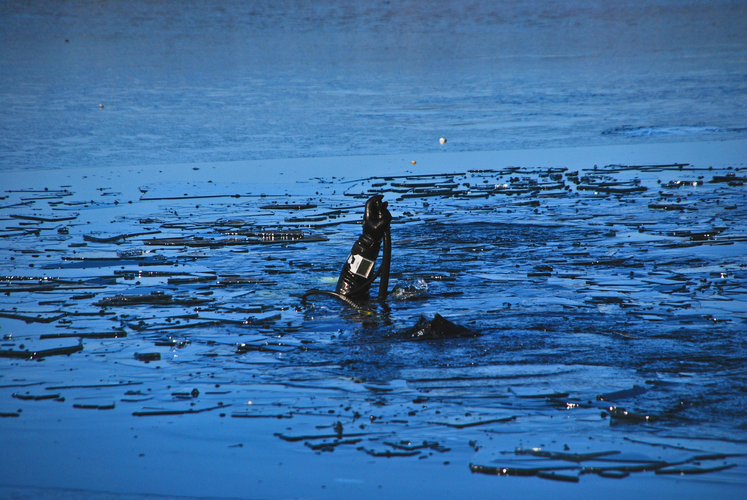

Can you use both BCD and drysuit for buoyancy control?
If you are using your BCD for buoyancy, effectively you are using both your BCD and your drysuit for buoyancy control. This is because you will always need to put air in your drysuit to prevent drysuit squeeze. Which means you’re putting air in your drysuit for comfort and buoyancy and BCD for just buoyancy. Some argue it’s best to use your BCD for buoyancy and add just enough air to your drysuit to eliminate drysuit squeeze.
For this to work you can only add a minimal amount to your drysuit, otherwise and unless you are over-weighted, you shouldn’t need to add too much to your BCD in any event. In my opinion if you use both BCD and drysuit for buoyancy control you’ll possibly feel some squeeze during the dive.

What are the dangers of using your drysuit for buoyancy?
- Drysuit feet first ascent. The more air in a drysuit, the more air can migrate to your feet and cause a drysuit feet-first fast ascent. Read this article on how to avoid a drysuit feet first ascent.
- Two lots of air to dump. This means in the event of problems there’s more that can go wrong.
- Emergency ascents are easier. If you use your BCD for buoyancy, instead of just your drysuit, you’ll be using both for buoyancy, as you will need to add air to your drysuit to prevent drysuit squeeze in any event. This means in an emergency ascent scenario your buddy will have to vent both air-cells, which is not as easy.*
* Pro diver tip. If your buddy does use both drysuit and BCD for buoyancy and you need to perform an assisted emergency ascent, first dump all the air from their BCD and then control the ascent using their drysuit as you ascend. If you are also using your BCD for buoyancy too, dump all the air from your BCD before you commence your ascent and manage the air venting from your and your buddy’s drysuits. This pro diver tip assumes you are bottom diving where you can set your ascent up kneeling on the bottom.
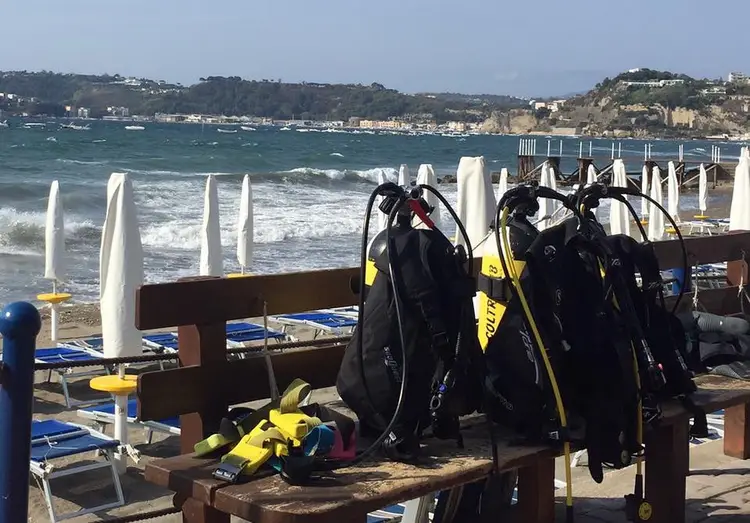
What are the dangers of using your BCD for buoyancy?
Buoyancy control using two air-cells. Once you are an experienced drysuit diver it will be easy to manage buoyancy control using your drysuit and BCD. But in the event of an emergency or panic, people often don’t think logically or sensibly. This is when things can go wrong and a panicked diver could forget to vent one or other buoyancy control device.
Drysuit or BCD For Buoyancy Control as a beginner
It’s safer for beginner divers to use only their drysuit for buoyancy instead of using their BCD. Whilst drysuit diving is easy, it’s a new skill to master and it’s better to be focused on controlling buoyancy using one air-cell, i.e. the drysuit. As already explained, if a beginner were to use their BCD for buoyancy, this would mean they are also using their drysuit too. As a beginner diver gets more experienced diving in a drysuit, they can make the choice to switch to using their BCD as well as their drysuit.
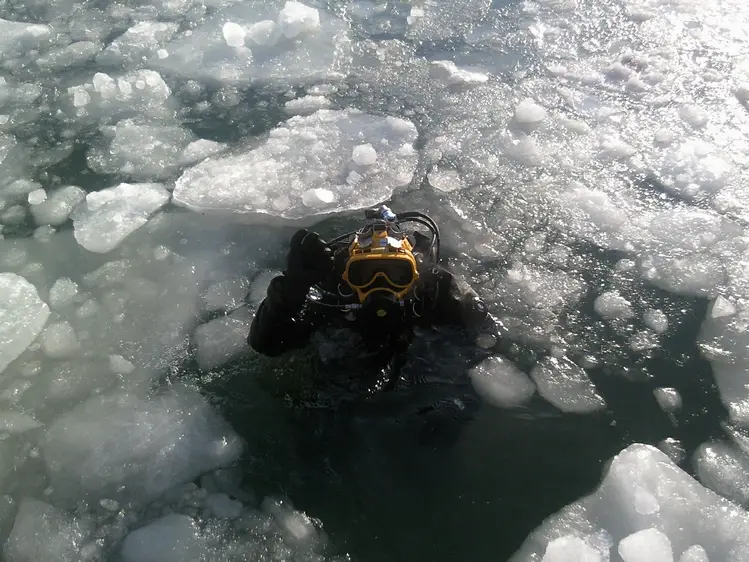
Drysuit or BCD For Buoyancy Control tech diving
Tech divers tend to have more and heavier equipment when diving, which can mean they prefer no to use their drysuit for buoyancy. They prefer to add enough air to their drysuit to eliminate drysuit squeeze, and then use their BCD for buoyancy. But before you contemplate doing this, think about how much weight you take on your dive. If you don’t start your dive heavy, your drysuit should be well able to provide sufficient buoyancy to maintain neutral buoyancy throughout the dive.
especially cold water or I’m doing a long deco stop I will pump extra air into the suit for insulation
Two bouyant elements on one dive is asking for chaos in an emergency
If you’re properly weighted there shouldn’t be too much air in the drysuit
Final thoughts on drysuit or BCD for buoyancy control
If you get your weighing right, you should be able to use just your drysuit for buoyancy control. If you are carrying too much weight you may need to use both your BCD and your drysuit for buoyancy. This is why often times tech divers use both their BCD and drysuit for buoyancy, as they have more heavy dive kit. But my argument is if you are carrying loads of heavy dive kit, lose some weight to compensate.
I dived for many years in the UK in a drysuit on a twinset (i.e. two 12 litre steel dive tanks) and only ever used my drysuit for buoyancy. This maybe because I’m bigger than the average dive at 6’6″ tall so the drysuit requires more air to prevent drysuit squeeze. and hence is enough air to neutralise my buoyancy, but I don’t think this is the case.
Pro diver tip. Always remove excess air from your drysuit before finally kitting up. You don’t want to jump into the water with a drysuit full of air as this will make it more difficult to descend. Do remove the air put one or two fingers in the top of your neck seal and kneel down and use your arms to squeeze as much air out as possible.
I’d be interested to hear what you do when you dive in a drysuit. Do you use your BDC or your drysuit or do you use both?
I hope you enjoyed this article about drysuit or BCD for buoyancy control and which is best
I’d love to hear from you. Tell us about your adventures of diving and snorkeling, in the comments below. Please also share your photos. Either from your underwater cameras or videos from your waterproof Gopro’s!
If this article hasn’t answered all of your questions. If you have more questions either about snorkeling or scuba diving (or specifically about drysuit or BCD for buoyancy control and which is best), please comment below with your questions.
There will also be many more articles about scuba diving (and snorkeling) for you to read and learn about these fabulous sports.
Have fun and be safe!

